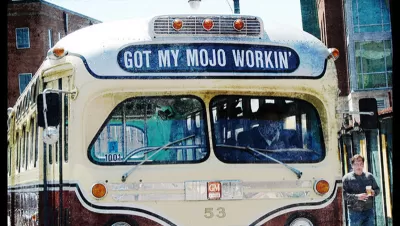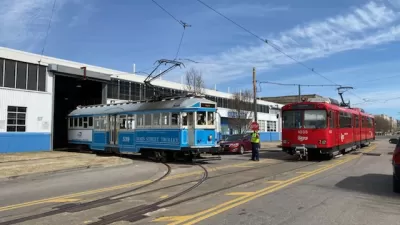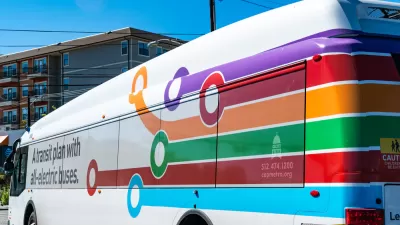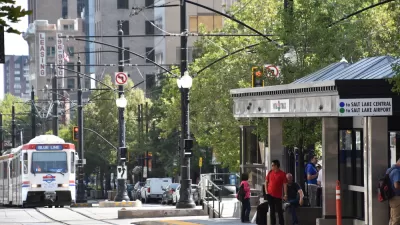In 2019, the city of Memphis will enter its third century with, hopefully, an ambitious new vision for public transit in place.

The Memphis 3.0 planning process is just getting started, but discussions about the future of transit in the city are already well under way. In addition to the release of the "Transit Vision Choices Report" released at the end of September, the city is promoting a public survey that will produce conclusions next year to help inform the Memphis 3.0 plan.
An article by Wayne Risher details the current transportation planning efforts, which are under direction by Jarrett Walker + Associates. Risher reports that the transit study occurs against the backdrop of declining ridership on the Memphis Area Transit Authority (MATA) system. The article cites Scudder Wagg, senior associate at Jarrett Walker, who describes an underfunding system in a increasingly sprawling city—the city of Memphis has doubled in land area since the 1960s.
MATA chief Gary Rosenfeld is also cited in the article supporting increased spending. "Rosenfeld has said the agency could add 200,000 hours of bus service by early 2019 with a $30 million increase in funding. A change in state law this year provided new funding options for transit," writes Risher.
Another article by Ryan Poe from August 2017 describes more about how the changed funding landscape in Tennessee has enabled Memphis's transit planning ambitions.
As for Memphis 3.0, the plan is expected to guide the city's vision for land use, neighborhood development, transportation, and more on the occasion of the city's bicentennial, which will occur in 2019.
FULL STORY: Transit vision coming into view for MATA as Memphis 3.0 launches study

Alabama: Trump Terminates Settlements for Black Communities Harmed By Raw Sewage
Trump deemed the landmark civil rights agreement “illegal DEI and environmental justice policy.”

Study: Maui’s Plan to Convert Vacation Rentals to Long-Term Housing Could Cause Nearly $1 Billion Economic Loss
The plan would reduce visitor accommodation by 25% resulting in 1,900 jobs lost.

Why Should We Subsidize Public Transportation?
Many public transit agencies face financial stress due to rising costs, declining fare revenue, and declining subsidies. Transit advocates must provide a strong business case for increasing public transit funding.

Paris Bike Boom Leads to Steep Drop in Air Pollution
The French city’s air quality has improved dramatically in the past 20 years, coinciding with a growth in cycling.

Why Housing Costs More to Build in California Than in Texas
Hard costs like labor and materials combined with ‘soft’ costs such as permitting make building in the San Francisco Bay Area almost three times as costly as in Texas cities.

San Diego County Sees a Rise in Urban Coyotes
San Diego County experiences a rise in urban coyotes, as sightings become prevalent throughout its urban neighbourhoods and surrounding areas.
Urban Design for Planners 1: Software Tools
This six-course series explores essential urban design concepts using open source software and equips planners with the tools they need to participate fully in the urban design process.
Planning for Universal Design
Learn the tools for implementing Universal Design in planning regulations.
Smith Gee Studio
Alamo Area Metropolitan Planning Organization
City of Santa Clarita
Institute for Housing and Urban Development Studies (IHS)
City of Grandview
Harvard GSD Executive Education
Toledo-Lucas County Plan Commissions
Salt Lake City
NYU Wagner Graduate School of Public Service





























